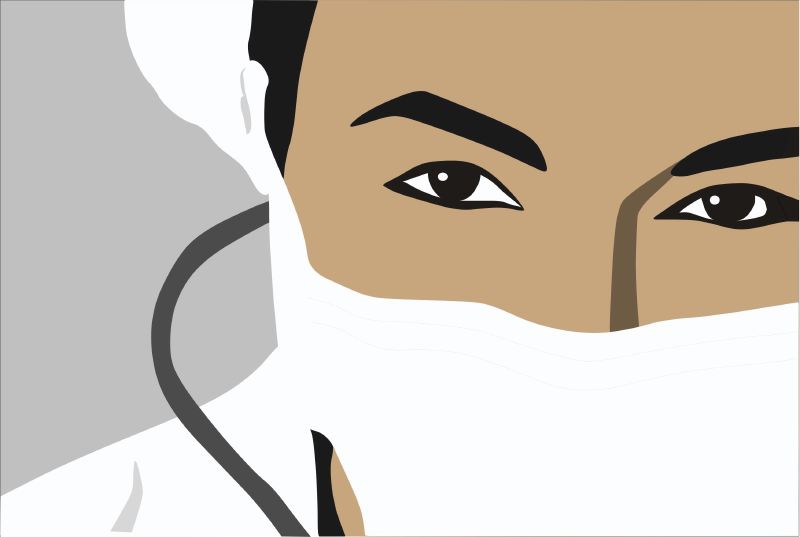
How many of us can relate to workplaces where it feels psychologically unsafe to speak out? A recent LinkedIn post from a colleague about physician burnout and workplace bullying brought back a bunch of memories of my own time as a young doctor. In those days, there was no discussion about bullying – you just sucked up what your trainers gave you and got on with it. Nor did the concept of workplace psychological safety ever crop up.
Ironic, because one of the most psychologically unsafe workplaces for staff that I ever experienced was a junior psychiatrist in a mental health unit. As a result, I felt unable to raise concerns, speak out, or be heard. Opportunities to improve patient care, and indeed to prevent tragedy, were missed as a result of the toxic unsafe workplace I was in at that time.
This article explores the concept of psychologically safe workplaces in healthcare and proposes 4 principles for developing safe environments for improving patient care.
Let me start by stating that psychiatry is unfairly underrated as a medical specialty choice. It’s not often where a clinician gets to blend the bio-psycho-socio-spiritual in helping people.
I am in no doubt that my experience could have occurred in any specialty or setting. I merely point out the irony.
The usual under-funding, difficulties in recruiting and retaining quality staff, and a medical leadership which disliked creating collaborations, treatment relationships, and research links, left a psych hospital in isolation. As a young doctor, bright-eyed and bushy-tailed, I came full of confidence and a desire to change the world.
The senior psychiatrist took one look at me and told me, “That’s not how we do things around here”.
Appeals to higher levels of management, even outside the organization were fruitless. Only my peers, fellow physicians with their own struggles, made a difference in how I felt. I knew that I wasn’t alone, that every workplace had its challenges.
The gaslighting when I raised concerns led me to question my own sanity. I also developed anxiety based on some of the attempts to undermine and discredit me that had gone on behind my back. Resultantly, I started to delve into unhealthy coping mechanisms.
I also stopped engaging in quality improvement, I stopped speaking up and out. I shut up and did my job, having given up on being heard.
No doubt over time this all contributed to my own burnout, addiction, and mental illness.
With time, therapy, and distance, I am now able to reflect on what went wrong. I propose 5 factors that make up a psychologically safe workplace.
I can now see that we had all 3 of the “toxic triangle” described by Padilla, Hogan and Kaiser leading to workplaces that are psychologically unsafe:
The process of destructive leadership involves dominance, coercion, and manipulation rather than influence, persuasion, and commitment.
Destructive organizational outcomes are not exclusively the result of destructive leaders, but are also products of susceptible followers and conducive environments.
When a team or organizational climate is characterized by interpersonal trust and a climate of respect, members feel free to collaborate and they feel safe taking risks, which ultimately enables them to tackle the enormous –life and death — challenges that each day in medicine brings.
Psychological safety at work plays an important role in cultivating team learning and improvement, both essential processes for modern, quality, patient-focused healthcare.
Workplace psychological safety:
Conversely, when there is low workplace psychological safety, people worry about taking interpersonal risks and engage in avoidance behaviors, such as silence.
A key piece of research on high-performing teams came from, of all places, Google.
Project Aristotle was research commissioned by Google to help them to understand what makes high-performing teams successful. They studied around 200 teams and 40,000 employees over a two-year period.
While they reported a number of fairly obvious things – in the best teams everyone was clear about what they were being asked to do and had a sense of purpose and meaning to their work – the standout finding was that in the best performing teams every single member of the team felt ‘psychologically safe’.
In practice this means that even the most junior people can freely speak out, can voice left-field ideas, and can show vulnerability and be open, without worrying about what negative consequences.
Building this culture, especially in a stressed or toxic healthcare environment, requires solid values-driven leadership.
The role of the leader in being inclusive and setting the tone for psychological safety is critical.
Below, we present 4 principles for all healthcare leaders to engage in which will promote safe psychological work environments.
When team members feel included, they are more inclined to speak up, contribute and add to the group. Some groups appear too big to be effective with many decisions made outside the ‘leading’ group. Equally, some appeared too small with people outside unsure about how to contribute.
Balancing dimensions of inclusion and diversity build conditions for success.
A team that has open and candid conversations is able to tackle hard problems better. When working in volatile, uncertain complex and ambiguous (VUCA) environments anyone’s voice might be mission-critical.
That one rare diagnosis, alternative viewpoint, back-of-the-mind case study, or random journal article that came to mind could make all the difference for that patient. Every team member should feel safe to speak without fear of any negativity. “There are no such things as stupid questions”.
Teams become unsafe when people are not able to help each other feel appreciated by team members, or are too defended to be willing to help.
There is no better way to grow psychological safety in your team than by being kind. And unkind behaviors – ignoring others, being unhelpful, name-calling, eye-rolling, excluding – all undermine the sense of psychological safety that is required for teams to thrive.
In my opinion, these are almost never people being deliberately difficult; they are usually driven by their own stresses and issues, but they need challenging in a kind, empathetic but firm way.
In our view, there is no better way to grow psychological safety in your team than by being kind. And unkind behaviors – ignoring others, being unhelpful, name-calling, eye-rolling, excluding, gaslighting – all undermine the sense of psychological safety that is required for teams to thrive.
Teams that hold mistakes against each other risk a lack of control and forward momentum. Institutions that scapegoat, discipline, or sideline staff for raising genuine concerns from a desire to improve things find that no one wants to speak out. Opportunities for improvement will be missed because staff do not feel safe.
A strong, collaborative response to the pandemic requires creating psychological safety among healthcare professionals in order to enable them to collectively redesign processes and services to cope with new demands, learn from mistakes, integrate knowledge, and implement changes accordingly.
We intend that by modelling psychologically safe workplaces here at Physicians Anonymous, doctors will learn the power of a safe space, and create the same for their colleagues at work.
